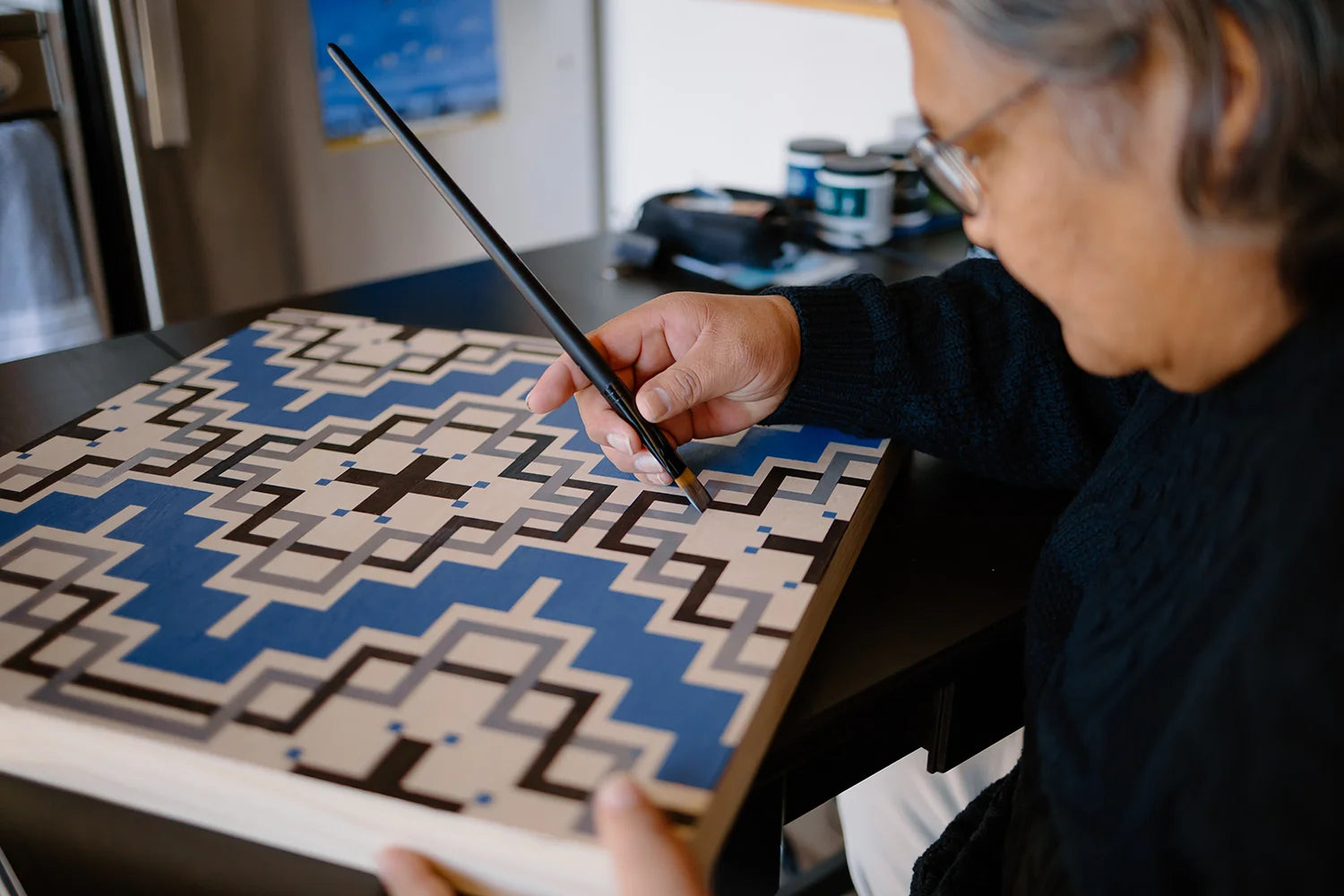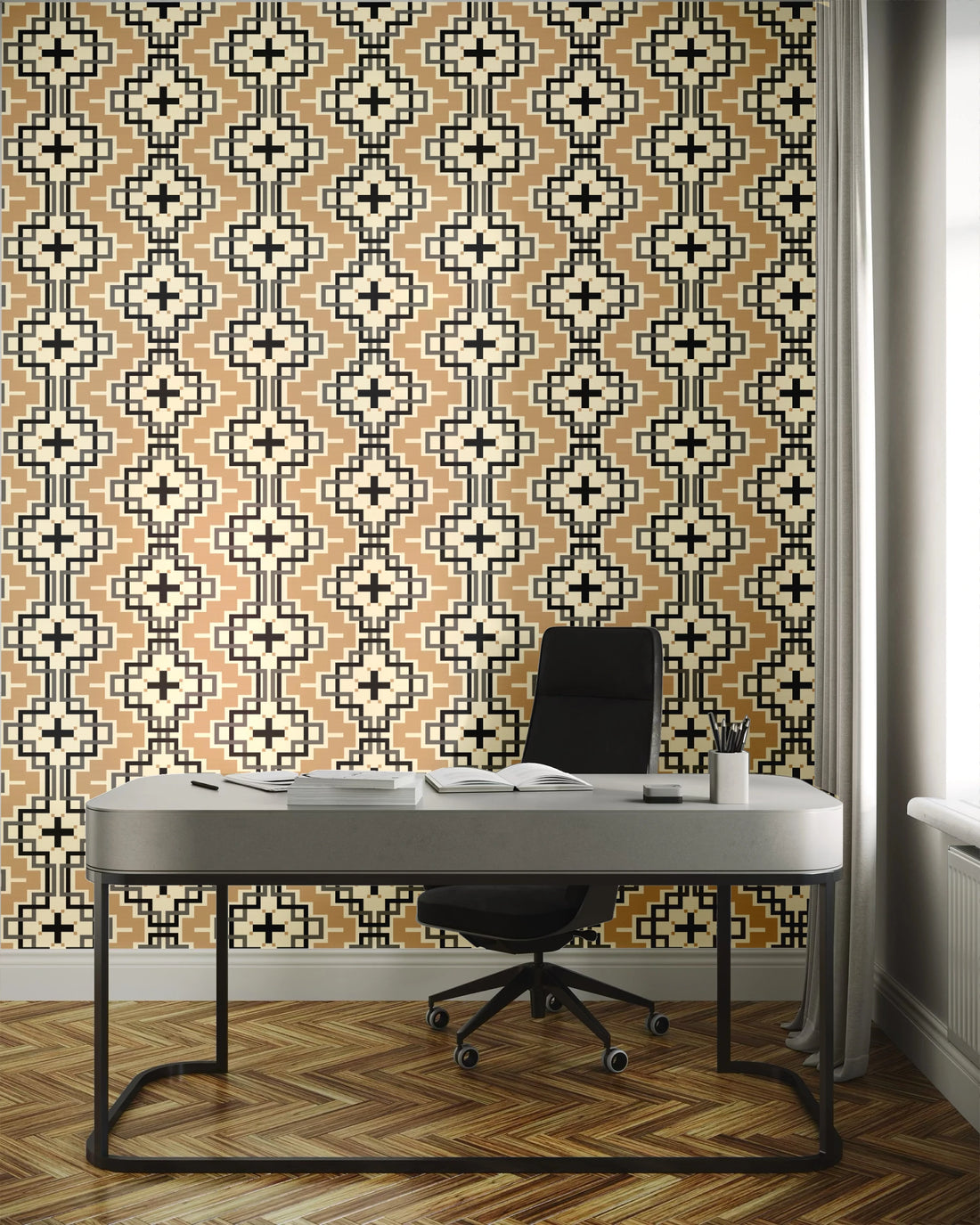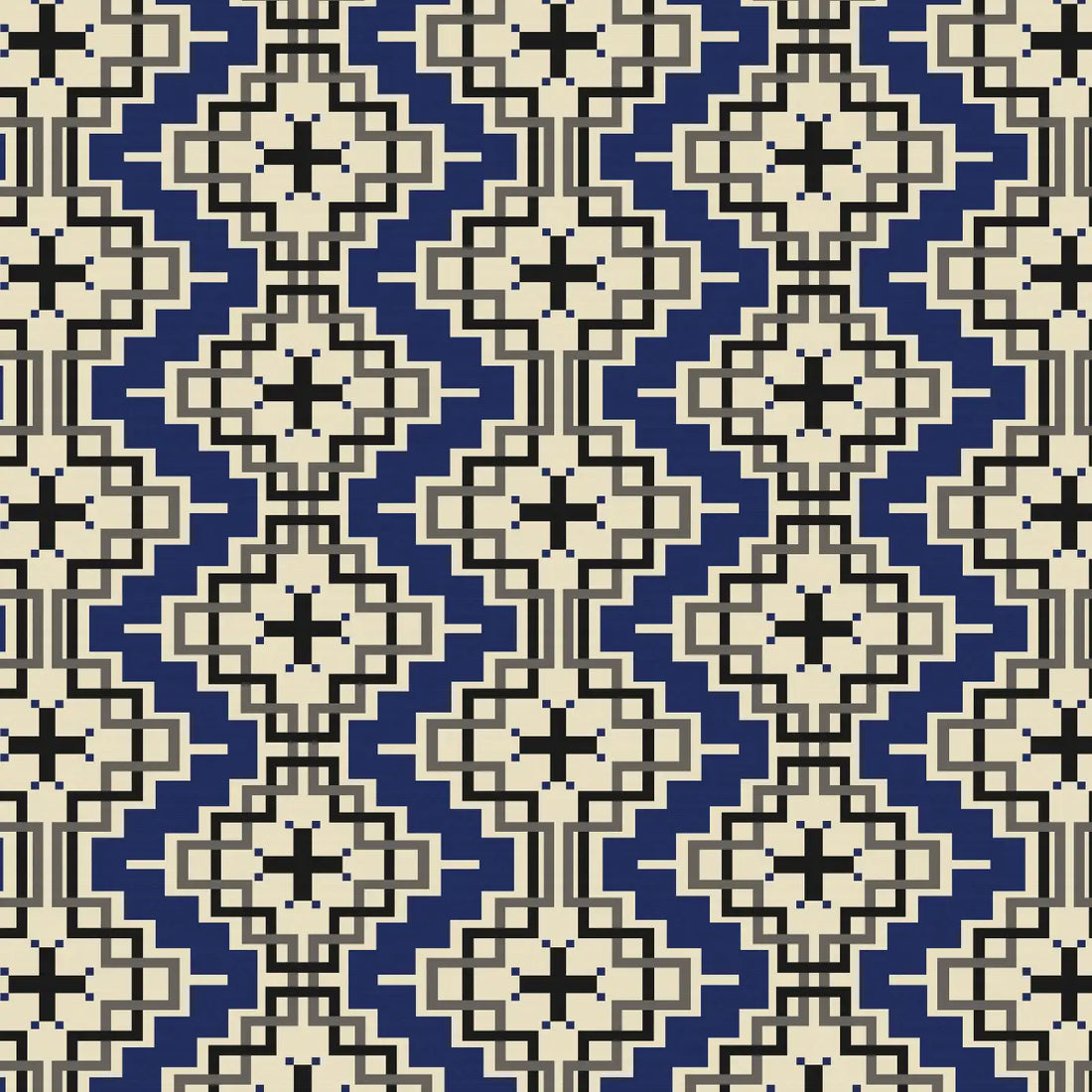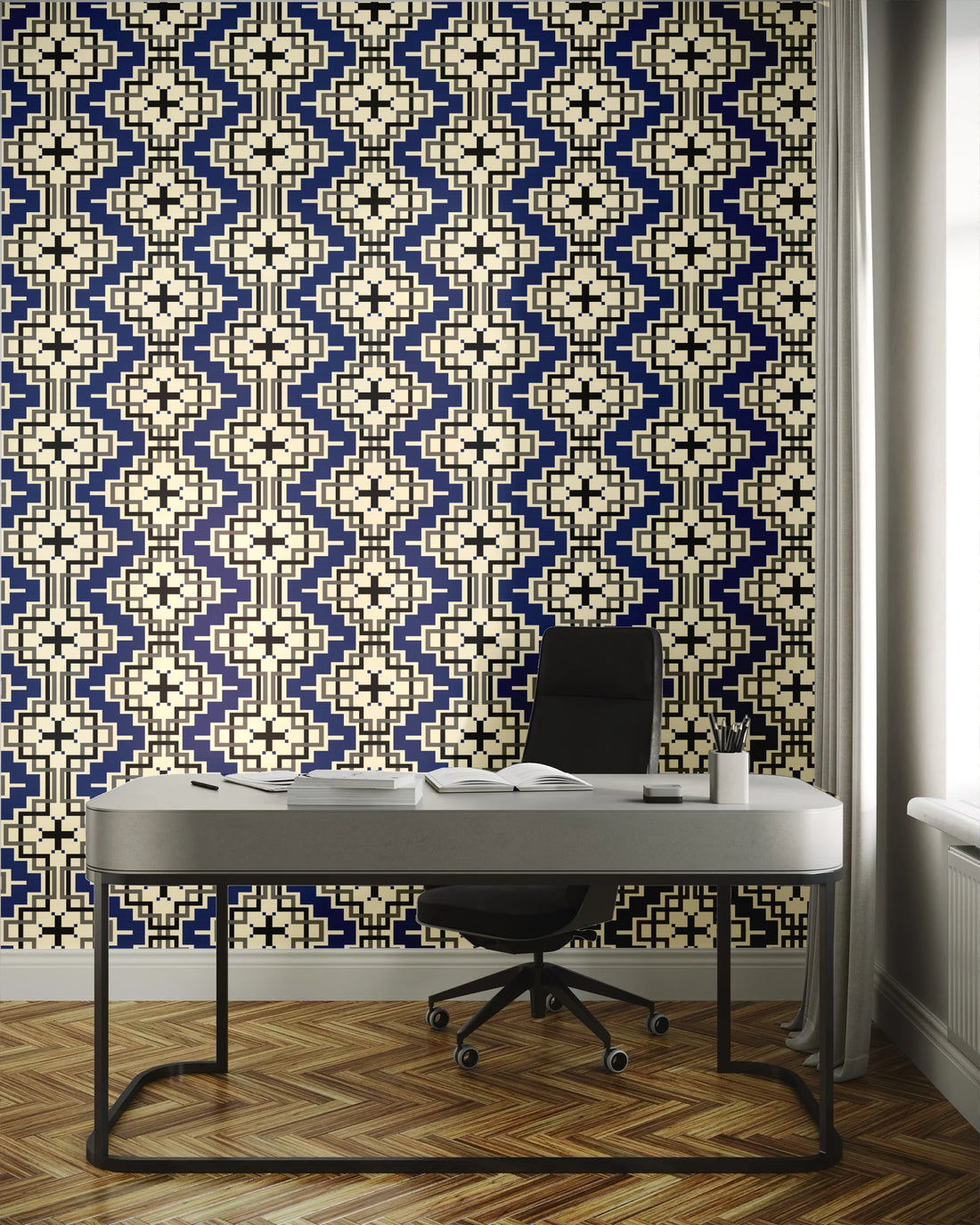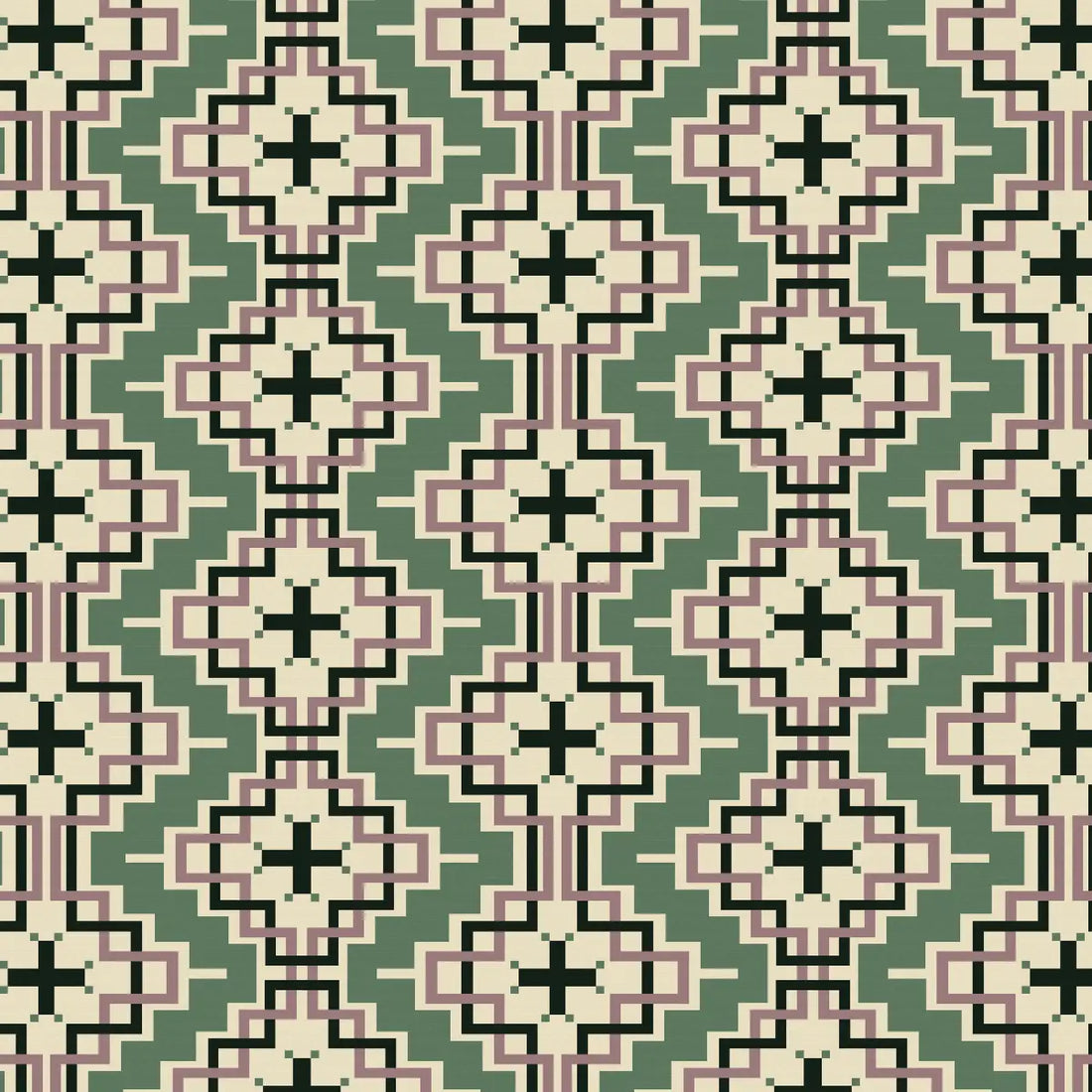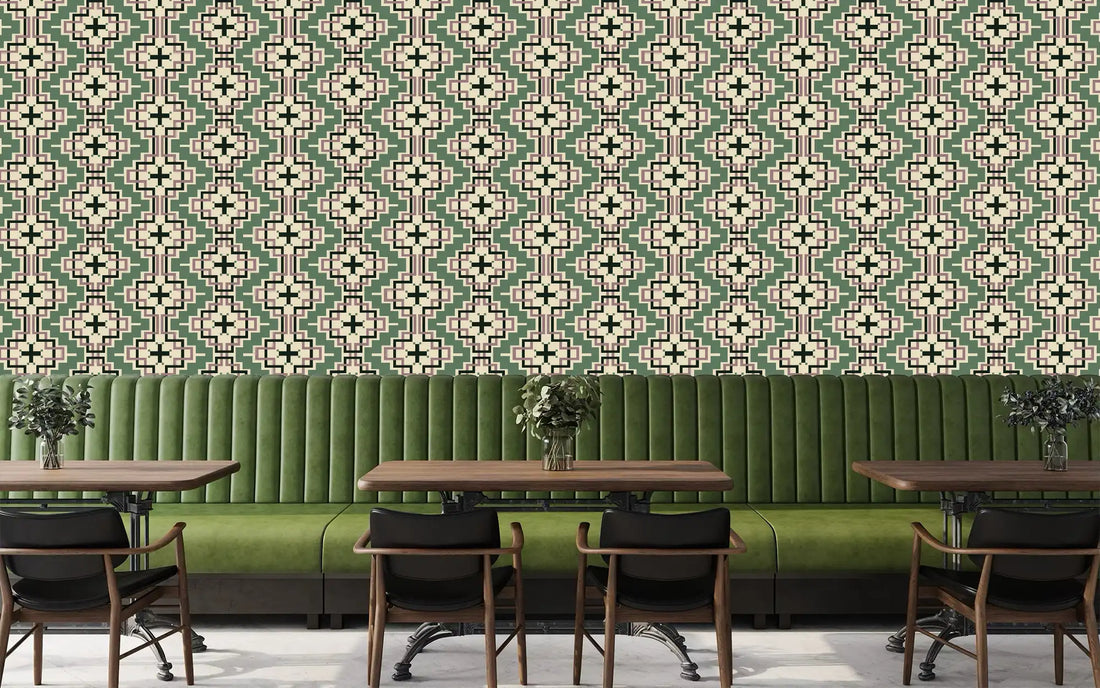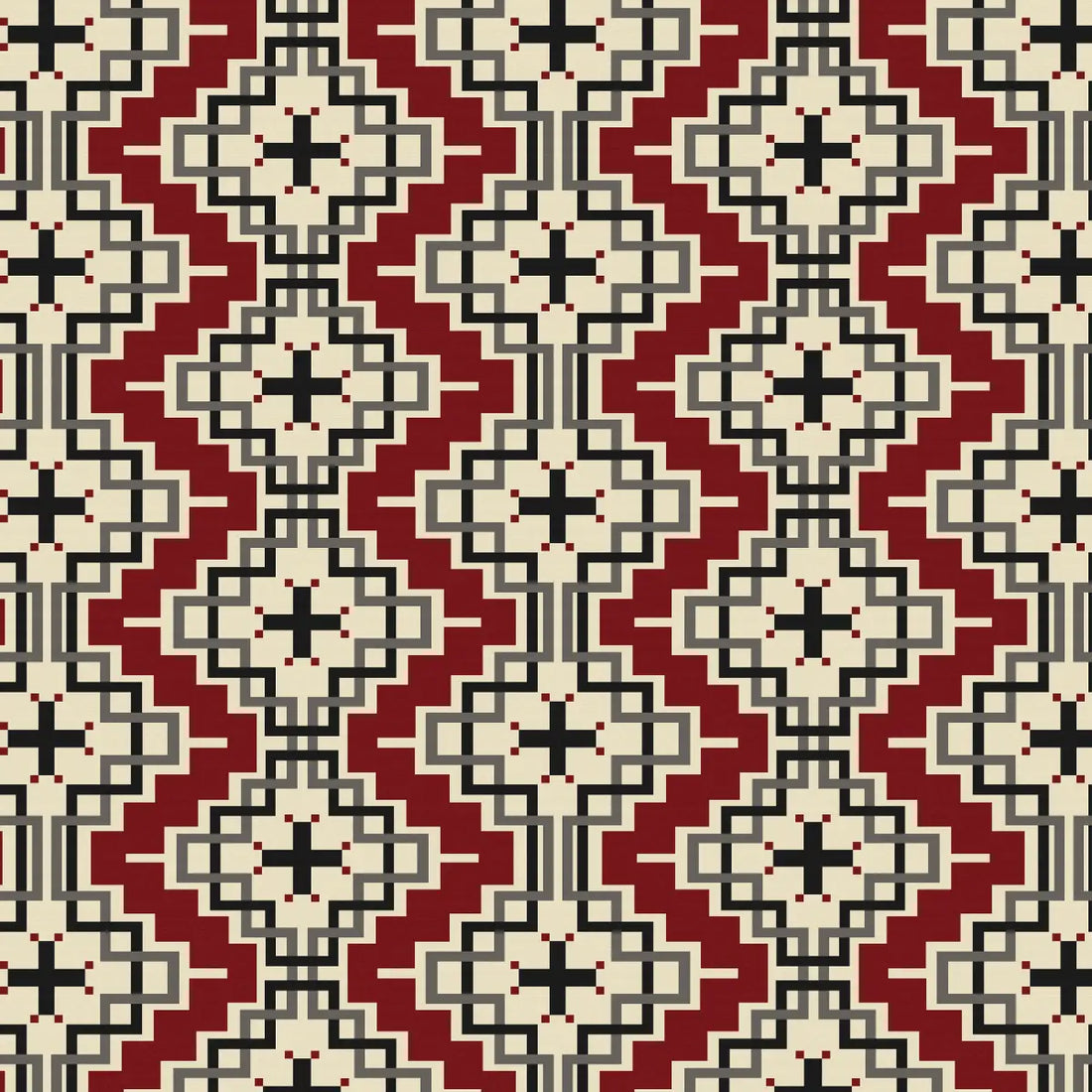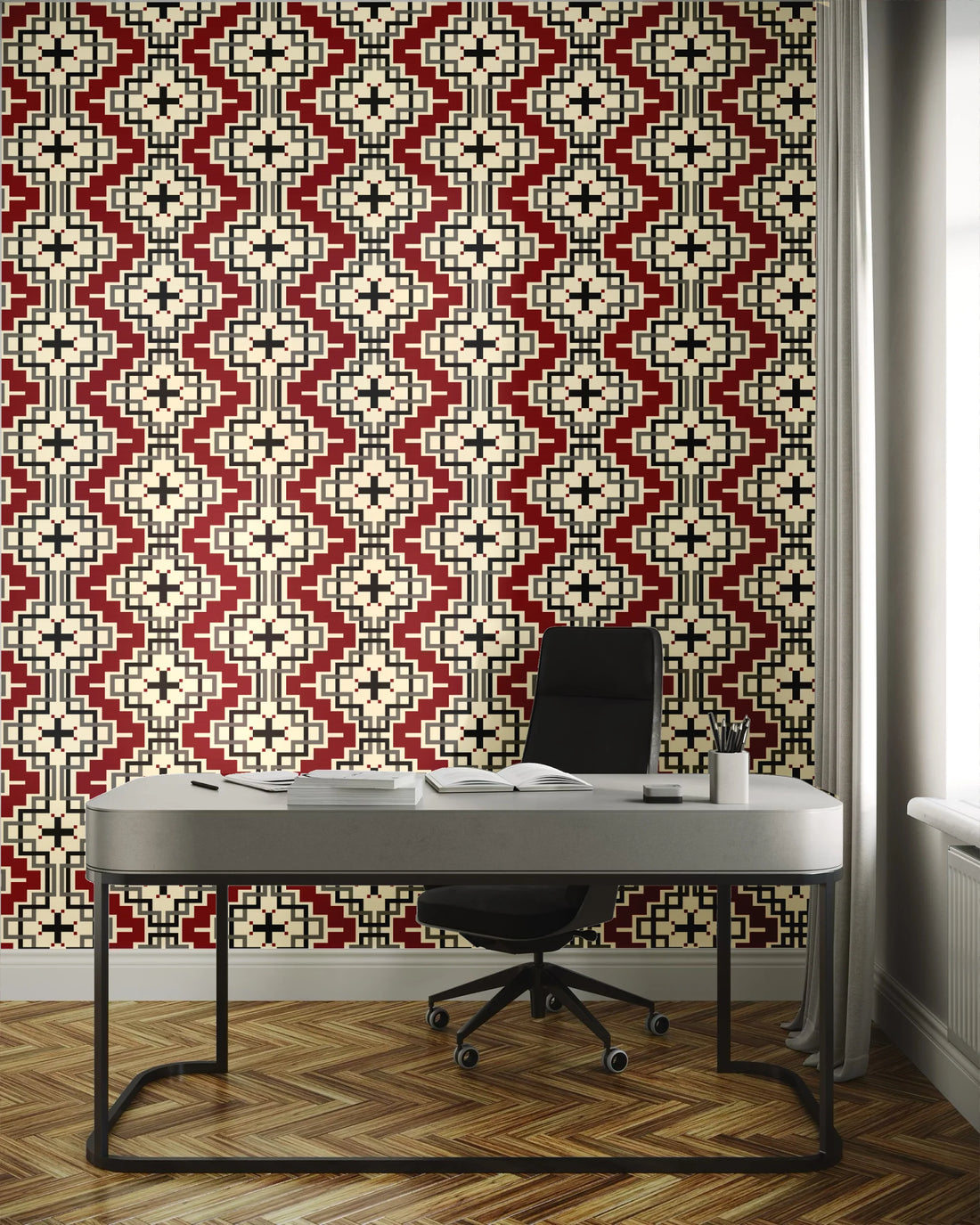"Everything is woven together, like a rug—if one part is missing, it will unravel. That's how I see myself, you, and everything else in the environment, whether it's here on the land or up in the sky."
JAYCEE BEYALE
-
Weaving Sacred Spaces
In JayCee’s art, every line, form, and color is a thread in a larger tapestry—much like a traditional Navajo rug, where each fiber depends on the next to hold the whole together. “If one is missing, then the rug will unravel,” he says. This principle of interdependence—between people, elements, and spirit—guides not just his artistic practice but his entire worldview.
Roots of Creation
Raised in Farmington, New Mexico, JayCee grew up grounded in both grit and grace. His father, a coal miner, musician, and multi-skilled tradesman from Lake Valley, taught him the value of hard work and adaptability. “He could do everything,” JayCee recalls—mechanic, welder, carpenter. His mother, raised by her grandmother in Navajo, New Mexico, brought order, care, and an eye for beauty into their home, along with a love for plants and tradition.
From her job at a pawn shop, JayCee was introduced to Navajo jewelry and paintings—early glimpses into Indigenous artistry that sparked a creative fire. His parents’ example shaped a deep respect for work done with purpose and care, whether in the trades, the home, or on canvas.
-
Becoming an Artist
JayCee’s path to becoming a visual artist has been one of constant evolution. He studied printmaking at the University of New Mexico, then spent seven years managing a silk screen and embroidery shop in Colorado Springs—learning the full arc of design and production. But it was the quiet solitude of the pandemic that shifted his path: “That’s when I really started painting,” he says.
With no formal training in painting, JayCee taught himself. He began with the bold energy of graffiti, then moved into the subtle control of watercolor—an act of artistic humility and growth. “I do get bored with certain processes, and then I want to introduce something else because I want to be able to do everything,” he says.
Walking in Beauty
Creating art, for JayCee, is not a job. It’s a spiritual act. “All life is beautiful,” he says. “I don’t feel like I’m doing it on my own. There are a lot of things and people, and especially spirits, that are helping me move along to ensure that I’m producing good work and doing it in this good way.”
In line with the Navajo philosophy of hózhó—living in balance—JayCee sees himself not as a sole creator, but as a conduit. His work is about honoring the seen and unseen, the living and the ancestral. “I cherish the work that I produce so much,” he says, which is why he resists replicating one successful formula. Each piece must be a true expression.
-
Patterns of Protection and Power
In designing his wallpaper pattern, JayCee saw an opportunity to transform walls into sanctuaries. He turned to the Ganado weaving tradition, paying tribute to Spider Woman, the sacred figure who taught Navajo women to weave. His intricate design also nods to other global forms—Celtic knots, Kene art from the Amazon, even the circuitry of computers—showing how different traditions can harmonize in unexpected ways.
His decision to use blue instead of traditional red was intentional. “It’s about honoring water,” he explains—a vital, sacred resource that connects all living things. With this pattern, JayCee weaves together past and present, ancestry and innovation, transforming interiors into sacred spaces.
Personal Growth, Collective Purpose
Even as recognition for his work grows, JayCee continues to wrestle with self-doubt. “I’m still battling with believing in myself,” he admits. But that humility deepens his commitment to community. “If I’m only doing this for myself, then I feel like I’m doing everyone, especially myself, a disservice.”
-
JayCee’s art is an act of service—uplifting Indigenous voices and creating opportunities for others to thrive. “My people mean so much to me that I want to help them. I don’t want to see them suffer anymore.” His work becomes a bridge—not only between traditions and innovation, but between healing and hope.
Looking Forward
For JayCee, the work doesn’t stop when the paint dries. Whether he’s creating murals, installations, or wallpaper, each project is a ritual—an offering. “It’s hard to turn that switch off,” he says. Every creation is a chance to uplift his people, honor the spirits, and remind all of us of our sacred connections—to land, to each other, and to the stories that continue to shape us.
"I want to ensure that what our ancestors did wasn't for nothing. Through my art, I honor their spirits that coexist with us."
JAYCEE BEYALE


